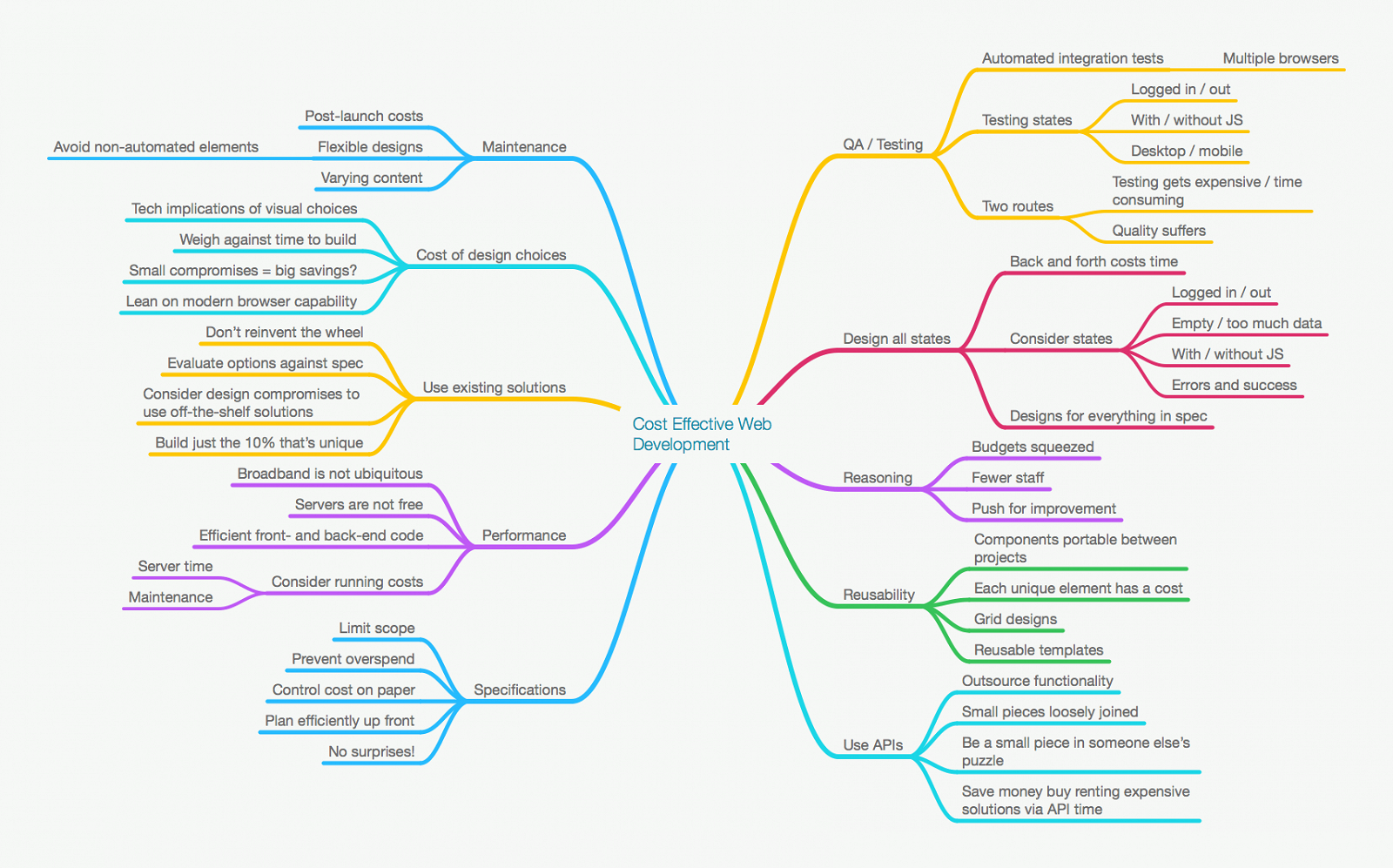Plan with Mind Maps
Planning on paper, I get hung up on trying to sequence ideas.
I was first introduced to mind maps on one of those enforced team building workshop days with an old employer. At the time I was annoyed at being diverted from “real work” with all this silly nonsense, and promptly forgot all about them. It was only when sketching out ideas for a presentation that they came back to me. Could I have actually found a use for them after all?
Mind maps are a type of diagram that works well for showing the relationships between pieces of information, but without putting them into an order. Below you can see a map for a presentation I created about web development.

When I plan a presentation, I often start by brainstorming the information I’d like to include. When doing this with traditional pen and paper, or even just in a text document, I’d nearly always get hung up on trying to organise the information.
On paper, I’d be distracted by wanting to leave enough space to come back with additional points on each idea, and in any long-form written style, I’d get hung up on trying to sequence ideas. I’m fully aware that I shouldn’t get hung up on these things and the whole idea is just to get ideas out, but I was getting distracted by the mechanics of the process.
I found mind maps, and in particular mind map software, great for this. With mind maps, you start with a central idea (the title of my presentation, in this case) and then you just add ‘nodes’ to it. Each node can have other, smaller nodes attached to that, and you just keep branching out like a tree with branches.
I find this freeing, as the software is constantly laying out the map in a circular arrangement around the core idea. There is no sequence. If you need more space, just add more ideas and the map will arrange itself. For how my brain works, this is a much better way to get ideas down and let my mind run without interruption.
Once the initial brainstorming is complete, you can then rearrange your ideas by dragging nodes about. You can merge similar branches, edit out dead-ends and generally refine the content until you’ve got a good non-sequential outline of the information you want your presentation to include.
I find mind maps also lend themselves really well to the structure of a presentation, not just the process. A slide deck is usually linear, but typically a presentation does tend to be made up of a smaller number of key ideas and points, each of which contains deeper exploration. The linearisation of those ideas should really just be an implementation detail that comes closer to the end of the process as the arc and flow are refined.
Mind map software
If you’d like to give mind maps a try, there are some good software options available. FreeMind is a free option that works on Windows and Mac. MindManager is a commercial option that also has Windows and Mac support.
The one I use personally (and is shown in the image above) is MindNode on the Mac, but they also have an iOS version which looks interesting.
If you’re interested in trying a different way of planning out a presentation, I’d really recommend giving mind maps a go and see if they work for you.
Advent speaker tips: this is part of a series of tips for public speakers that we’re posting throughout advent. Check back daily during December for more.